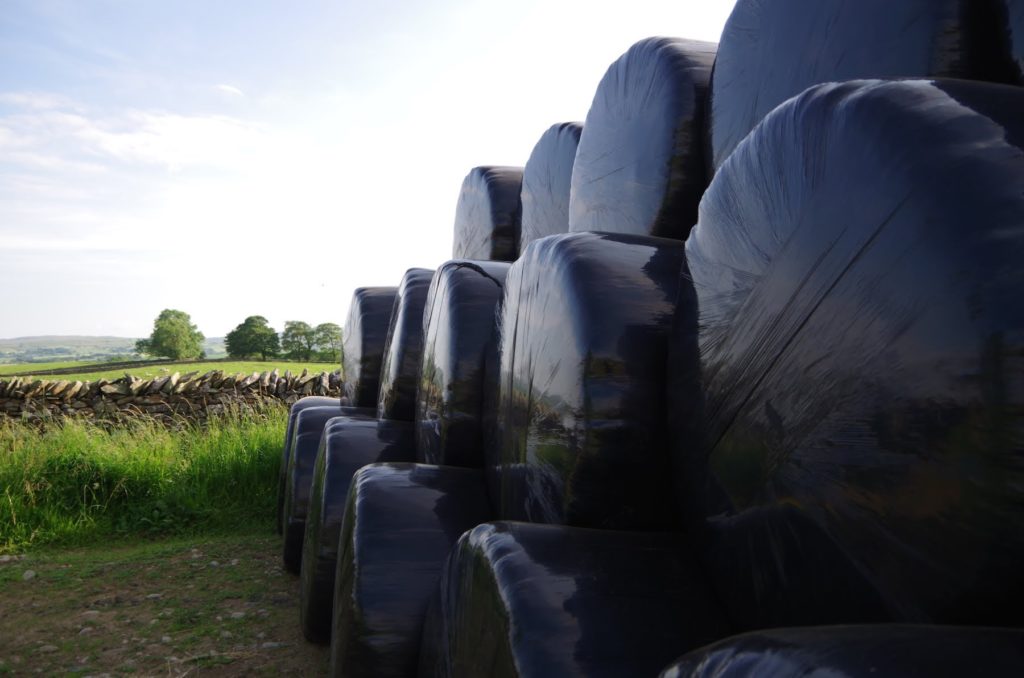Improving Baled Silage Quality: What’s it Worth?
12 April 2021When buying or selling silage bales, nutritional value is rarely taken into account, but the variation in quality can be huge (as discussed in the article Reducing the Environmental Impact of Silage Bales). Having an analysis to hand might allow you to command a better price if selling and the buyer is more aware of the silage quality they are purchasing and whether it is suitable for the class of stock it is destined for.
Due to the costs associated with making baled silage and the environmental concerns around plastic use and ease and cost of recycling, focusing on improving the dry matter and/or nutritional value of silage can pay dividends. However, what is the value of producing silage with say an energy content 1 MJ/kg DM higher?
Value for Dairy
From a dairy perspective this is easy to work out based on the extra litres of milk produced from a silage of 11.5 MJ/kg DM compared to a silage of only 10.5 MJ/kg DM. If a cow is eating 12 kg of DM from silage with a higher energy content of +1 MJ, this is an additional 12 MJ intake. The energy required to produce one litre of milk at 4% butterfat and 3.3% protein is 5.3 MJ, therefore an extra 12 MJ intake will produce an extra 2.2 litres/day.
If a silage bale weights 700 kg at 25% DM there are 175 kg of DM and an extra 175 MJ in the bale. This extra energy is equivalent to 33 litres of milk and at 27p per litre, this is worth an extra £8.91 per bale.
Value for Beef
On the beef side, assume a 400 kg growing steer eats 8 kg DM per day (2% body weight) which is made up of 22 kg of silage (at 25% dry matter) and 3 kg barley. The steer on the poorer silage (at 1MJ/kg DM less) will grow at 0.95kg/day and the steer on the silage at 1MJ higher will grow at 1.1kg/day, an extra 150g/day. Over a 180 day winter, that equates to an extra 27kg of growth. At £2.30/kg liveweight, that 27kg is work an extra £62/head.
There will be benefits for feeding higher energy silage to the suckler cow as well, particularly post-calving, although these are more difficult to quantify in monetary terms. However, there will be less concentrate feed required, or improvements in milking performance and hence calf growth could be expected which will also have a financial benefit.
This raises the question, should silage bales be bought on an energy basis? Consider also the DM content of the silage, how much DM is in a bale and how long that bale will last the stock you are feeding? This is certainly worth taking into account when buying and selling bales and consider these financial benefits when it comes to making silage this summer. The stage of cutting is the most important factor affecting silage quality, with earlier cutting generally resulting in a higher energy and protein content.
Although weather can have an influence, there are many things that can be done to help maximise nutritional quality and reduce dry matter losses in both the field and the bale:
- Plan cutting date to match quality requirements for livestock. The earlier the cutting, the higher the nutritional value.
- Ensure nitrogen applied has all be fully utilised before cutting.
- Avoid cutting too low to the ground. This will increase the amount of fibrous material in the bale, reducing nutritional value as well as affecting regrowth. It can also increase the risk of soil contamination and therefore the quality of the fermentation. Leave a minimum 5cm stubble but if targeting quality over quantity, target a 7-8cm stubble.
- Aim for a minimum dry matter content of 30% with a rapid wilt (24 to 36 hours at the very most). Ted as soon as possible after moving or use a spreader mower to reduce wilting time.
- Maximise the density of bales by chopping forage, allowing a more effective fermentation, reducing nutritional losses, and improving forage quality.
- While plastic use should be considered, applying six layers will aid fermentation, reduce air ingress and result in less mould/spoilage.
Lorna MacPherson, lorna.macpherson@sac.co.uk
Sign up to the FAS newsletter
Receive updates on news, events and publications from Scotland’s Farm Advisory Service

